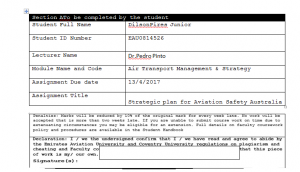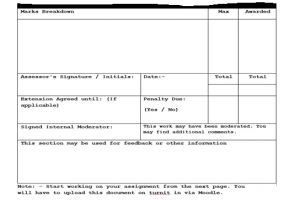Air Transport Management & Strategy Case Study Solution
Introduction
Australia is highly dependent on aviation as compared to many other countries in the world, because of the sparsely populated landscape and the remoteness of the country from the population centers of the world. Figure 1 in the appendices shows total no. of hours flown according to each industry over a sample of years. Australia has a very long aviation history and the country has a high capacity and an excellent Regular Public Transport safety record (Government, 2014).
If we analyze the accident statistics of the major countries around the world then it could be said that Australia is the safest country to fly in this world. However, the past performance of the country can never be an indicator of the future performance and this could only be achieved through consistent monitoring and vigilance of the safety systems, which have been, designed the country (Government, 2014). Aviation is highly diverse industry and there are many challenges for the regulation. Therefore, the regulatory system of Australia has to be strong enough for accommodating the RPT sector that Is evolving rapidly, while the small operators should not be encumbered. (ICAO, 2012).
Average age of each major Australian airline fleet is around 7 years and for smaller airlines and GA it is 28 years (Government, 2014). Over the past decade, the aviation sector of Australia has been shaped by a number of external factors such as the deliberate act of the government policy, and this is done by commissioning the various inquiries within the regulatory matters of aviation. All the accidents and incidents are reported to the Australian Transport Safety Bureau (ATSB), which is one of the independent air safety investigation agency, and these are not reported to the Civil Aviation Safety Authority (CASA), which is Australian civil aviation regulator (ICAO, 2012). This report aims to perform a detail strategic analysis of aviations safety in Australia along with a critical analysis of the strategic plan of aviation safety for the next four-year period.
Air Transport Management & Strategy Harvard Case Solution & Analysis
Objectives
This report attempts to determine the present strategic position of aviation safety in Australia and review the strategic plan for the aviation safety for 2015-16. We would be highlighting the strengths and weaknesses of the four-year strategic plan until 2018 and then make specific recommendations to the safety management organizations of the country. The specific objectives that we would be investigating in this report are:
- The effectiveness, processes and structures of all the agencies involved within aviation safety.
- The direction & the outcomes of the regulatory reform process which the Civil Aviation Safety Authority (CASA) is undertaking.
- The interaction and the relationship of all the agencies involved in aviation safety as well as with the Regional Development department and the department of Infrastructure.
- The suitability and strength of the safety related regulations and strategic directions of Australian aviation safety when they are bench marked against the other jurisdictions that are comparable overseas.
- Any other matters related to safety.
Addressing the Key Points
We analyze the aviation safety of Australia by determining the strategic position of aviation safety currently in Australia and the critical analysis of the four-year strategic plan.
Strategic Position and Critical Analysis
Current Strategic Position of the Aviation Safety in Australia
The ATSB is the prime agency in Australia, which is responsible for independent investigations related to the civil aviation incidents, accidents the safety related deficiencies. The ATSB agency is completely separate from the transport regulators like CASA and transport policy makers. It is governed by the commission. Within transports mode of the aviation, no blaming investigations are conducted by ATSB, which are according to the Transport Safety Investigation Act 2003 (ATSB, 2017). &
The purpose is not to investigate administrative, criminal or any regulatory action. The ATSB also investigates the safety issues regarding the trend of occurrence that might lead to a another accident in future. For example, the investigation of the aviation fuel contamination that affected the thousand aircraft at the end of the year 1999, could have resulted in a series of serious accidents and it had highlighted the deficiencies in the safety system in global aviation refining and fuel standards (Batt, 2009). ATSB also participates in the investigations of accidents and genuine incidents including Australian-enrolled air ships (Infrastructure, 2016).
The ATSB helps different abroad offices in the examination of accidents & genuine incidents which do not include Australian-enlisted aircrafts (ATSB, 2017). The ATSB makes a noteworthy commitment for the security of the Australian aviation industry by examining, analysis, the open announcing and instruction on common flight wellbeing matters with irreconcilable situation & without 'fear or support' (Batt, 2017). The target of exploring accidents & incidents is to keep the events for the future accidents and not only for the motivations behind allotting fault or liability (Government, 2014). All the aviation related agencies in Australia are performing their role quite well as regarded by the industry. In assessment of Panel, a good reputation has been maintained by the department for Openness and Transparency along with leadership and integrity..................
This is just a sample partial work. Please place the order on the website to get your own originally done case solution.













